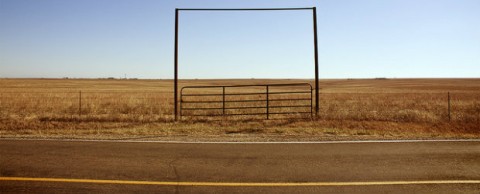Lament for small places
Eighty-plus years ago, Granddad and Grandma Clapp moved into the Oklahoma Panhandle and established a farm. The farm was still in the making when the great dust storms of the Dirty Thirties engulfed the region.
Grandma and Granddad persisted. They remember dunes forming in the fields and how Granddad would ride his steel-wheeled tractor over them, trying to cultivate the soil. Sometimes the dunes were so steep that the tractor tipped over. During the worst of the dust storms, the family would huddle inside the house and hold damp cloths over their noses and mouths. Despite such conditions, they prevailed. Eventually the drought passed, and then oil was discovered beneath the fields. Finally, the family prospered.
Today the family farm is no more. It lasted two generations, from its founding to the point when Clapps no longer lived there and worked the land. My uncle was the last holdout, and he moved away more than a decade ago. I migrated from Oklahoma to Chicagoland in 1979, and by now have lived more of my life near Chicago than on the flat, sweeping vistas of my birth.





